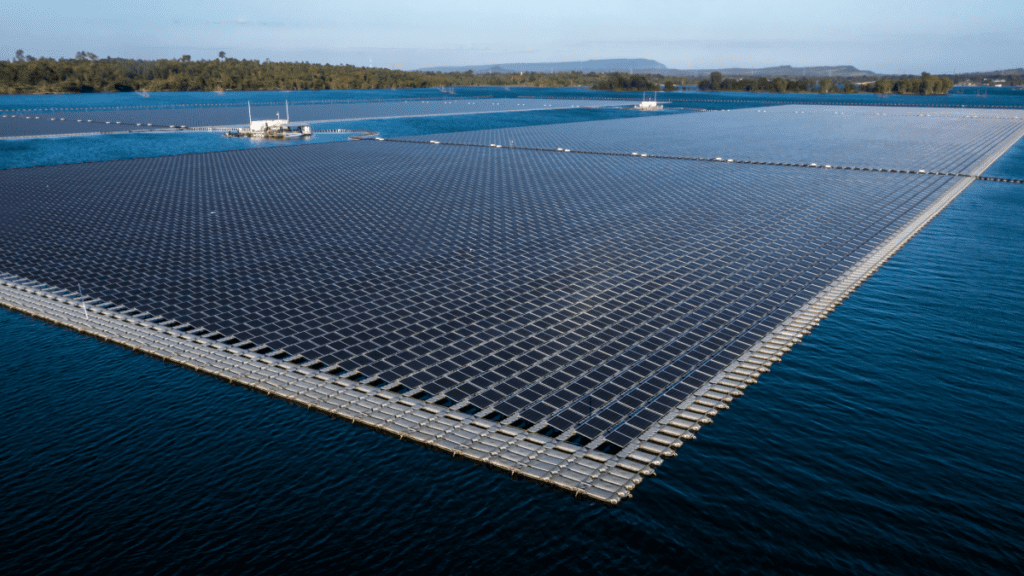Amidst growing concerns over climate change and the need for sustainable energy solutions, the state of Assam in northeastern India has set an ambitious target of generating 1,000 megawatts (MW) of renewable energy within the next three years. To achieve this goal, Assam is looking towards an innovative approach – utilizing its water bodies to build floating solar power plants.
Floating solar plants have gained increasing attention worldwide in recent years, as they offer a practical solution to the limitations of land availability for traditional solar panel installations. By utilizing water bodies such as lakes, reservoirs, and ponds, Assam hopes to harness the untapped potential of its water resources to meet its energy needs while minimizing the impact on land use.
The concept of floating solar plants involves the installation of photovoltaic (PV) panels on floating platforms, which are then anchored to the bottom of the water body. These platforms are specially designed to withstand the dynamic forces of water, ensuring the stability of the solar panels even in challenging conditions.
Assam is blessed with an abundance of water bodies, making it an ideal location for the deployment of floating solar plants. With several rivers, lakes, and ponds spread across the state, Assam has a vast potential to tap into this clean and renewable energy source. By utilizing its water resources, Assam can not only reduce its dependence on fossil fuels but also contribute to the overall energy security of the region.
In line with this vision, the state government of Assam has already taken significant steps towards achieving its renewable energy targets. It has collaborated with various public and private entities to identify suitable water bodies for the installation of floating solar plants and initiate feasibility studies. Additionally, the government is actively engaging with experts in the field to design and implement appropriate technology solutions.
One key advantage of floating solar plants is their ability to generate higher electricity output compared to land-based solar installations. The cooling effect of water helps to maintain a lower operating temperature for the PV panels, thereby improving their overall performance and efficiency. Moreover, the reflection of sunlight from the water surface results in enhanced light capture, further increasing the electricity generation capacity of floating solar plants.
The environmental benefits of floating solar plants are also significant. By covering a portion of the water surface, these plants help to reduce evaporation, thus conserving water resources. Additionally, the shades created by the floating platforms can provide a favorable environment for fish and other aquatic organisms, fostering biodiversity in the water bodies.
Overcoming Challenges: Adapting Technology for Floating Solar Plants in Assam
However, the implementation of floating solar plants in Assam is not without challenges. The unique climatic conditions of the region, including heavy rainfall during the monsoon season and extreme temperatures throughout the year, pose a technical challenge for the stability and performance of the floating platforms.
To overcome these challenges, Assam will need to adapt the technology used in floating solar plants to suit its specific conditions. This may involve the development of specialized anchoring systems that can withstand heavy rainfall and turbulent water currents. Additionally, the PV panels themselves may need to be designed with features that enhance their resilience against extreme temperatures and humidity.
Collaboration with technical and engineering experts will play a crucial role in the successful implementation of floating solar plants in Assam. By leveraging their expertise and knowledge, the state government can ensure the development of a robust and sustainable floating solar infrastructure that can withstand the unique challenges of Assam’s climate.
In addition to technical challenges, financial considerations also come into play. The initial investment required for the installation of floating solar plants can be substantial. However, it is important to note that floating solar plants have a relatively longer lifespan compared to traditional solar installations, resulting in cost savings over the long run.
Furthermore, the potential for revenue generation from floating solar plants is significant. Assam can explore various models, such as power purchase agreements with utility companies or selling excess electricity back to the grid, to maximize the financial returns from its investment in floating solar plants. These revenue streams can help offset the initial costs and ensure the long-term sustainability of the projects.
A Transformative Step towards a Sustainable Future
The deployment of floating solar plants in Assam represents a transformative step towards a sustainable future for the state. It not only aligns with the global shift towards renewable energy but also sets an example for other regions to follow. By utilizing its water bodies, Assam can not only address its energy needs but also contribute to the larger goal of reducing greenhouse gas emissions and combating climate change.
The benefits of floating solar plants go beyond just energy generation. They offer an opportunity to create employment and skill development opportunities for the local population. The construction and maintenance of floating solar plants require a diverse range of skills, from engineering and technical expertise to operations and maintenance. Assam can leverage this potential to promote local entrepreneurship and drive economic development in the region.
As Assam progresses towards its goal of 1,000 MW of renewable energy, the successful implementation of floating solar plants will serve as a testament to the state’s commitment to sustainability and innovation. It is a significant milestone in Assam’s journey towards a greener and more prosperous future, ensuring a reliable and clean source of energy for generations to come.
Conclusion
In conclusion, Assam’s plan to harness the power of floating solar plants in its water bodies is a commendable initiative that holds immense potential for the state’s renewable energy goals. By adapting technology, addressing challenges, and leveraging financial opportunities, Assam can pave the way for a sustainable and prosperous future. As the world looks towards renewable energy as a viable solution, Assam’s efforts serve as an inspiration and a model that can be emulated by others in their pursuit of a greener planet.



